Why footwork matters in pickleball
When discussing the significance of footwork in pickleball, one might compare it to the foundation of a grand building; without a strong base, the rest can come crumbling down. Footwork is not merely about moving from one spot to another; it is about ensuring that the player is in the best possible position to make the next shot. Good footwork translates into enhanced positioning, improved agility, and a more consistent contact point, all of which contribute to overall game performance.
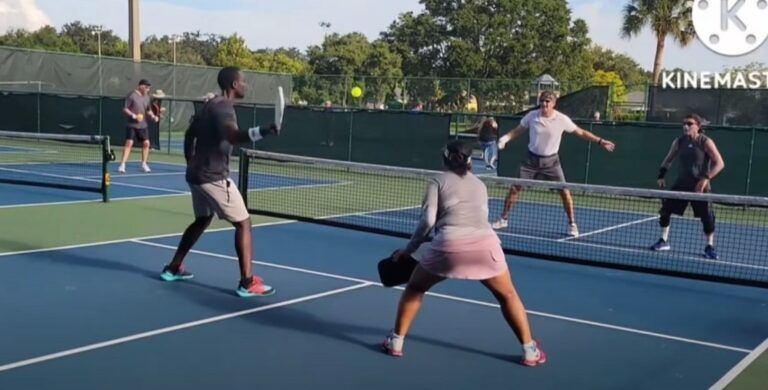
Enhanced positioning and court coverage
Positioning is crucial in pickleball, dictating how effectively a player can respond to an opponent’s actions. Players who maintain proper footwork are better able to center themselves on the ball, maximizing their court coverage. Imagine a horse galloping across an open field, effortlessly navigating bends and turns that’s how fluid and graceful agile footwork can make a player appear on the court.
Effective positioning allows players to anticipate where the ball will land and adjust quickly. This minimal delay can mean the difference between a chaotic return and a calculated shot that sets up your next move. According to a study in the Journal of Sports Sciences, athletes with superior footwork are observed to have a significantly higher success rate in maintaining control over the game.
Improved agility and stamina for longer play
The court can become a battlefield during a pickleball match, and the vehicle of victory depends a great deal on one’s agility and stamina. Through rigorous footwork drills, players can improve their ability to change directions swiftly, duck under swings, and stretch far to make challenging shots. This agility is not just valuable at the beginning of a game; as matches progress, fatigue can set in, making stamina indispensable.
Incorporating agility drills into practice routines can boost a player's endurance levels. Players accustomed to agile movements can sustain their performance far longer than those who don’t, reminiscent of marathon runners who excel due to a strong cardiovascular base.
Consistent contact point for better shots
Footwork and shot accuracy go hand in hand. The way players position their feet influences their ability to strike the ball at the optimal contact point. Stability and balance are paramount; a player who is out of position will invariably struggle to maintain consistency. When footwork drills emphasize the importance of maintaining a steady base, players naturally develop better habits, leading to more accurate shots.
For instance, tennis prodigy Serena Williams once emphasized the importance of ‘finding your sweet spot’ while rallying. In pickleball, that sweet spot can often only be reached through meticulous attention to foot positioning and movement. Mastering footwork elevates not just individual gameplay but contributes to overall reliability during matches.
Essential pickleball footwork techniques
Understanding the nuances of fundamental footwork techniques is crucial for any player aiming to improve their game. There are core techniques that every aspiring pickleball player should master, laying the framework for future success on the court.
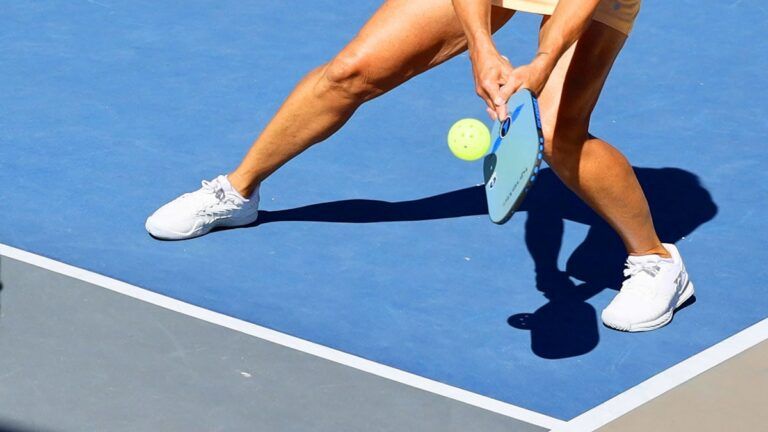
The ready position: your starting point
Every successful match begins with a solid foundation the ready position. Like an athlete poised to sprint, adopting the proper stance can set the tone for quick reactions.
- Feet shoulder-width apart: This allows for greater stability and balance.
- Knees bent: A slight bend prepares the body to spring into action.
- Weight on the balls of your feet: This readiness allows for quicker movements.
- Paddle up and ready for action: Being prepared to respond to an opponent’s play is critical.
This position is akin to a coiled spring, waiting to release energy in any direction. Spending time perfecting this stance alone can transform a player’s performance dramatically. Imagine stepping onto the court as a tightly wound spring, ready to unleash energy!
The split step: reacting quickly
The split step is an indispensable movement in a pickleball player's arsenal. Properly timed, this technique acts as both a catalyst for explosive movement and a mechanism for quick reactions to an opponent's shots.
- Timing it right: Players must learn to anticipate their opponent's shot to execute the split step effectively.
- "Loading" the legs: Much like compressing a spring more tightly, players need to engage their leg muscles in anticipation of a rapid burst forward.
By integrating this technique into drills, players enhance their reaction time considerably, allowing them to better respond to unpredictable plays.
Shuffling: moving side-to-side like a crab
Lateral movements are essential in pickleball matches, as they allow players to cover the court efficiently. Shuffling is one of the most effective methods of achieving this.
- Maintain a sideways stance: Keeping the body turned toward the net enhances readiness.
- Avoid crossing your feet: This practice prevents unnecessary delays, making players sprightly and agile.
The sideways shuffle can be visualized as a crab scuttling across the sandy beach, nimble and dexterous. The faster a player can shuffle, the quicker they can react to their opponent’s shots, creating a domino effect that can lead to points won by sheer agility.
Crossover steps: covering more ground quickly
An extension of lateral movement, crossover steps allow players to move more quickly across the court. This technique is imperative when speed is of the essence.
- Use when you need to move faster laterally: As situations demand, employing crossover steps can cover more distance in less time.
This technique is particularly effective when maneuvering to reach wide shots, giving players an edge in unexpected plays. Crossover steps open up the court, providing a tactical advantage to those who embrace their importance in gameplay.
Top pickleball footwork drills for beginners
For beginners, understanding the basics is essential; drills are a vital component of mastering your footwork. Here are some fundamental exercises that can bolster a player's proficiency.
Cone drills: boosting agility and lateral movement
Cone drills are an excellent way to enhance agility and lateral movement on the court. Through a zigzag pattern, players can focus on changing directions quickly:
- Set up cones in a straight line, approximately three to five feet apart.
- Practice shuffling between the cones while staying low to maintain balance.
This exercise not only maximizes agility but also emphasizes maintaining a low center of gravity, enabling more controlled movements.
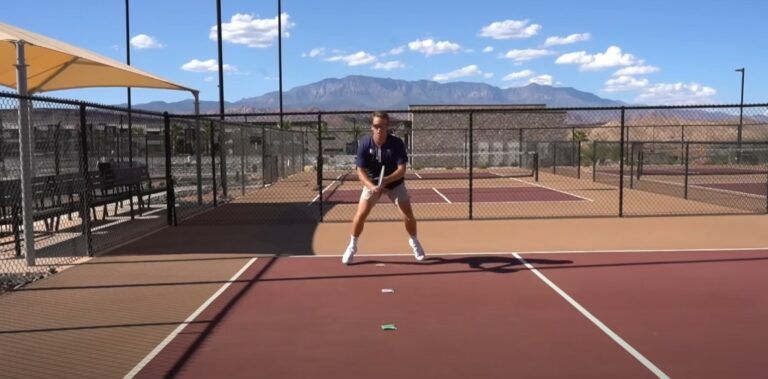
Shadowing: practicing footwork without the ball
Shadowing drills are a unique yet effective practice method that involves simulating game scenarios without the ball. By visualizing game situations and moving accordingly, players develop crucial skills in anticipation and court awareness.
- Imagine various shots coming your way and practice the corresponding footwork.
- This technique enhances muscle memory and prepares the mind for real-game situations.
Shadowing can be thought of as a silent rehearsal, where the player dances through the court, visualizing strikes, thereby building confidence.
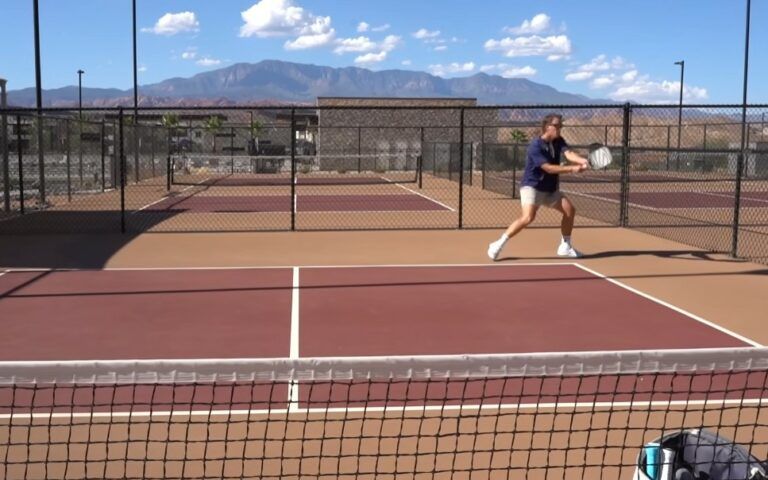
Clock lunges: mastering deceleration and control
Clock lunges focus on mastering the intricacies of deceleration and control, which are often overlooked but essential components of effective footwork. Players lunge in a circular pattern, simulating real match dynamics:
- Maintain upper body posture and core stability as you lunge to all “hours” on a clock, emphasizing proper technique.
- Pay attention to your outside foot while lunging; this will help you maintain balance.
Proper execution of this drill can transform a player’s ability to recover their footing and prepare for subsequent plays, reminiscent of a dancer executing a perfectly choreographed routine.
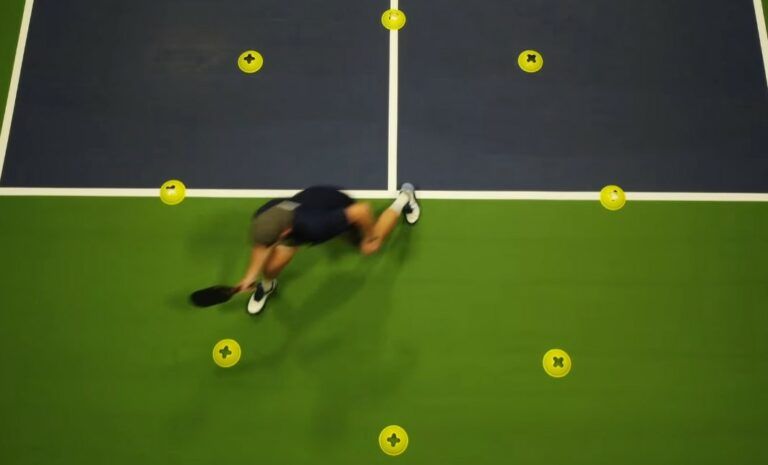
Split-step drills: perfecting your reaction time
Incorporating split-step drills into practice sessions can significantly refine timing and explosiveness.
- Practice timing your split step with a bouncing ball, ensuring you land lightly.
- Focus on your ability to explode in any direction after the split.
This exercise heightens reaction times and helps players feel more connected to their movements, improving confidence during matches.
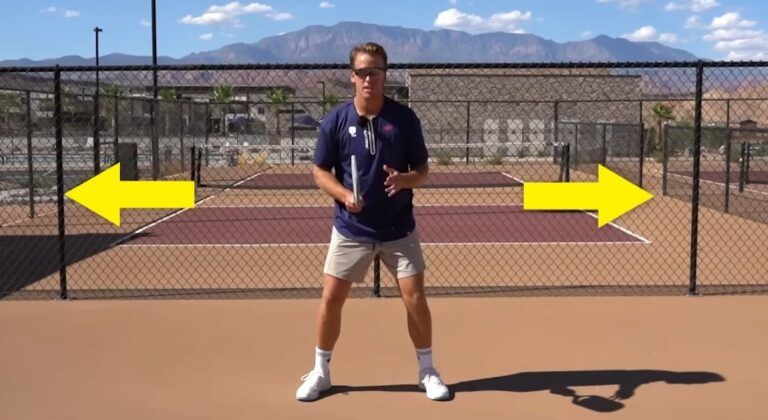
Figure-eight drills: developing continuous movement
Figure-eight drills can be an effective way to encourage continuous movement. By shuffling around cones set in a figure-eight pattern, players can work on endurance:
- Emphasize smooth transitions and controlled movements as you navigate the pattern.
- This drill fosters a rhythm that can enhance gameplay flow.
The beauty of this exercise lies in its ability to harmoniously combine aerobic conditioning with footwork, propelling players to perform at their best during extended matches.
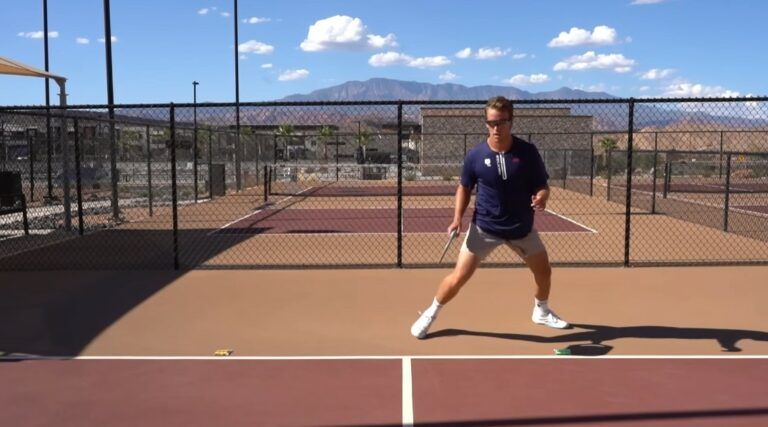
Pickleball footwork for doubles: moving as a team
Team dynamics and coordinated movement in doubles play heighten the importance of effective footwork. Communication and teamwork among partners can significantly influence match outcomes.
Why covering the middle is crucial
In a doubles match, understanding how to cover the middle can minimize open court space for opponents, a strategy that is essential for maintaining control.
- By implementing a collective focus on positioning, partners can effectively guard against opposing shots that may veer centrally.
The middle of the court can be the Achilles’ heel for many teams, and addressing this vulnerability through cohesive footwork provides a significant tactical advantage.
Moving as a unit: no gaps, no surprises
Excellent communication between partners ensures that players move in sync, protecting each other and eliminating gaps in court coverage.
- Practicing coordinated movement drills enhances this fundamental aspect of doubles gameplay.
- Mutual trust and instinctive reactions can be built through consistent footwork practice, which ultimately fosters a solid partnership.
The flow of doubles play becomes akin to a well-rehearsed dance, where each partner knows their steps, ensuring smooth transitions between offensive and defensive plays.
The Simone drill: practice makes perfect
The Simone drill is designed to reinforce coordinated movement and court coverage among doubles teams.
- Players practice moving from the net to the baseline and back, simulating common court scenarios.
- Couples should focus on maintaining communication and synchronizing movements.
Engaging in drills like the Simone gives players exposure to responsive scenarios that strengthen their ability to operate as a cohesive unit. By practicing together, teams can capitalize on the strength of their footwork, enhancing their overall performance.
Footwear and injury prevention: taking care of your feet
In pickleball, good footwork begins with the right shoes. Proper footwear can significantly mitigate injury risks while enhancing performance.
Pickleball-specific shoes: designed for the game
Investing in pickleball-specific shoes can make a world of difference when it comes to stability and lateral movement.
- These shoes provide the necessary support for quick directional changes.
- Features such as padded soles, proper grip, and arch support minimize the risk of injuries associated with the game.
Having the right pair of shoes can make the difference between a comfortable match and an exhausting risk-laden experience.
Warming up and stretching: preparing your body
Equally crucial is the importance of warming up and stretching before stepping onto the court.
- Warm-up: A proper warm-up routine can prepare the body for the physical demands of a match, easing tight muscles into action.
- Stretching: Regular stretching can enhance flexibility, essential for swift movements on the court, thus reducing the risk of injuries.
Both warm-up and stretching should be incorporated into every practice and game day routine, creating a fundamental approach for all players to prioritize their physical well-being.
Conclusion
In conclusion, mastering footwork is not merely an enhancement; it is the cornerstone upon which victorious pickleball strategies are built. As players diligently practice essential drills, they cultivate agility, positioning, and stamina, enhancing both their game and enjoyment.
Whether engaging in simple drills or embracing the intricacies of coordinated movements within a team dynamic, the influence of focused footwork resonates across every level of play. By investing time in refining these fundamental skills, players are not just improving their performance they are nurturing their love for the game, propelling themselves toward both personal and competitive success.
As the adage goes, “Greatness is in the details,” and every step taken on the court embodies the journey toward excellence in pickleball.










